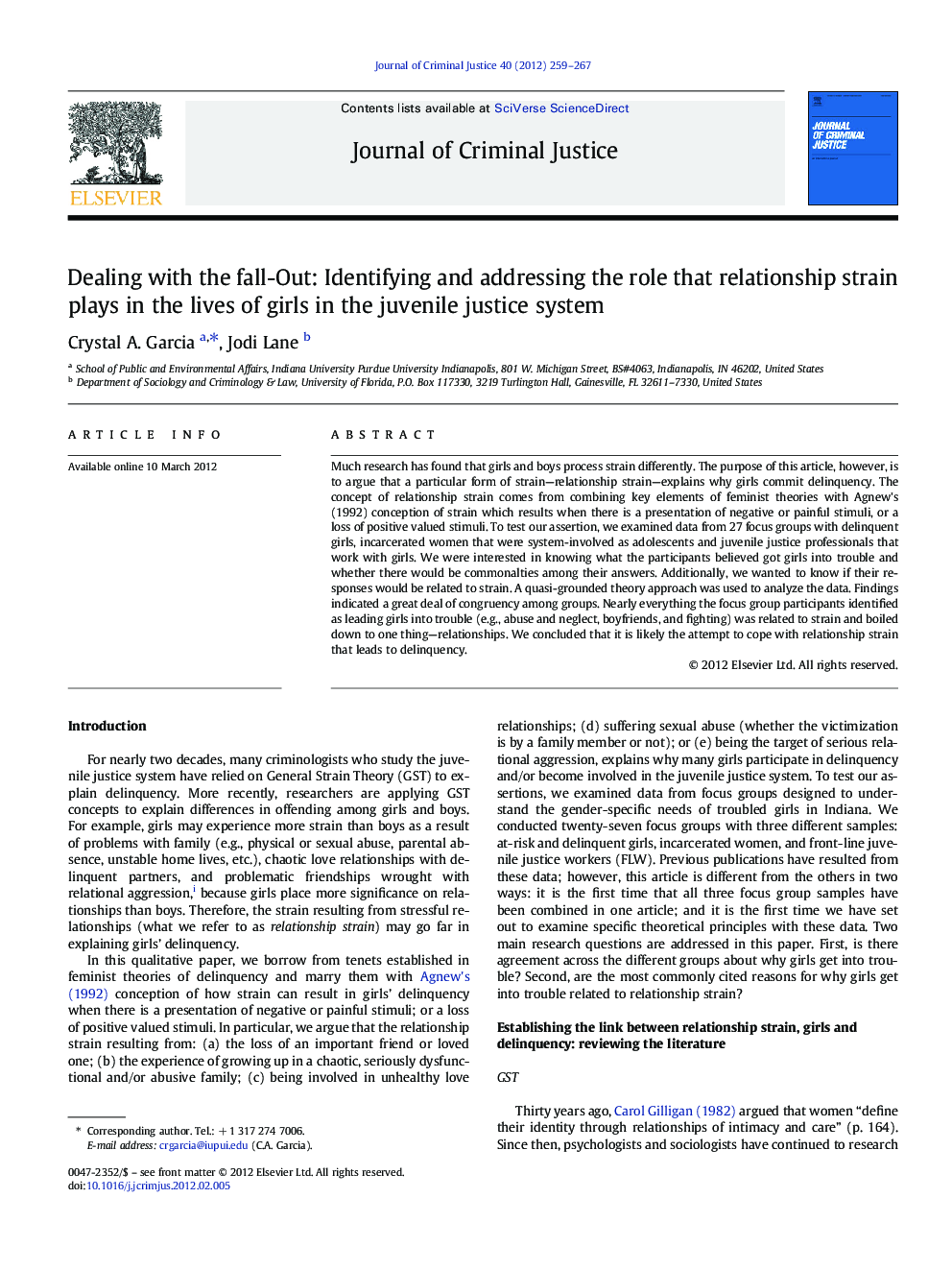| Article ID | Journal | Published Year | Pages | File Type |
|---|---|---|---|---|
| 882874 | Journal of Criminal Justice | 2012 | 9 Pages |
Much research has found that girls and boys process strain differently. The purpose of this article, however, is to argue that a particular form of strain—relationship strain—explains why girls commit delinquency. The concept of relationship strain comes from combining key elements of feminist theories with Agnew's (1992) conception of strain which results when there is a presentation of negative or painful stimuli, or a loss of positive valued stimuli. To test our assertion, we examined data from 27 focus groups with delinquent girls, incarcerated women that were system-involved as adolescents and juvenile justice professionals that work with girls. We were interested in knowing what the participants believed got girls into trouble and whether there would be commonalties among their answers. Additionally, we wanted to know if their responses would be related to strain. A quasi-grounded theory approach was used to analyze the data. Findings indicated a great deal of congruency among groups. Nearly everything the focus group participants identified as leading girls into trouble (e.g., abuse and neglect, boyfriends, and fighting) was related to strain and boiled down to one thing—relationships. We concluded that it is likely the attempt to cope with relationship strain that leads to delinquency.
► Girls, women and justice staff agree about what leads girls into trouble. ► There is clear evidence that relationship strain is a major problem for girls. ► There are three types of relationship strain: familial, love and frenemy strain. ► The type of relationship strain a girl experiences influences her coping behavior.
